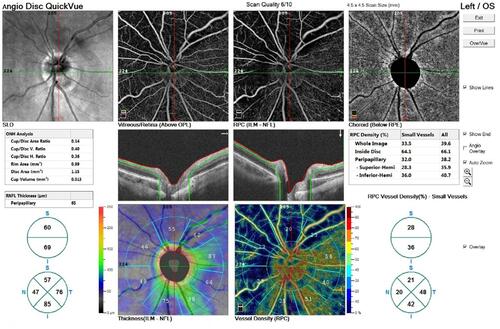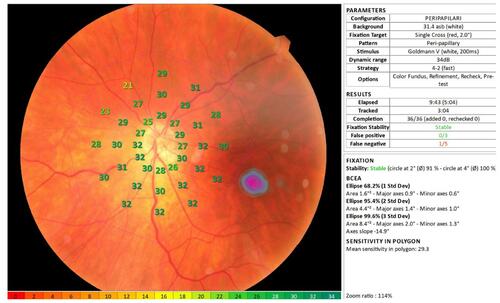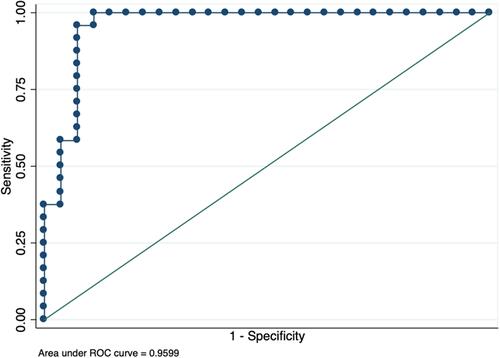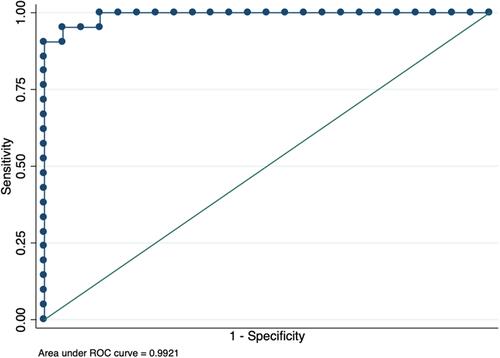Figures & data
Figure 1 Example of a print-out from the papillary anatomic and vascular assessments (RTVue XR Avanti, with AngioVue system, Optovue®).

Figure 2 Example of a print-out from the circumpapillary microperimetric assessment (MP-3 microperimeter, Nidek®).

Table 1 Overall and per Group Analysis
Table 2 Discriminative Power of Each Variable


